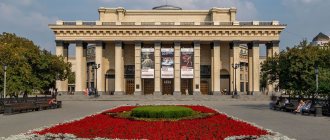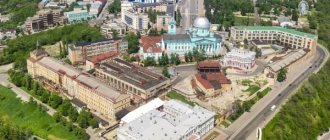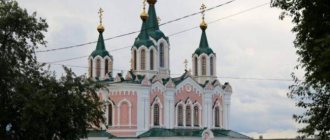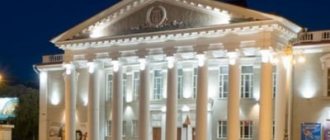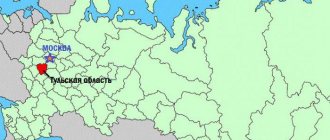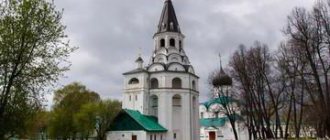The Kurgan region is located in a unique area, at the junction of the Urals and Siberia , where healing springs of mineral water have been flowing out of the ground for many centuries.
The Kurgan region is a repository of exceptional and unique places, an ensemble of provincial antiquity, the memory of the Decembrists, architectural and temple architecture of past centuries and shrines, combined with modernity, impressing with its spiritual power. Vast expanses of hunting grounds and over three thousand lakes for fishing, recreation, treatment and recovery.
Monuments of historical and cultural heritage
In order to attract private investors to the preservation of cultural heritage sites, we propose to consider the possibility of purchasing the following historical buildings for ownership or lease, including for a long-term period (49 years).
Contact faces:
— Umanets Inessa Vasilievna
— Head of the Department of Revenue and Organizational Work of the Department of Property and Land Relations of the Kurgan Region Tel.: 8 (3522)-463-555 (ext. number 102#)
— Agafonova Anna Gennadievna
– General Director of the Fund “Investment Agency of the Kurgan Region” Tel.: 8 (800)-250-47-31
Kurgan, st. Kuibysheva 20:
House included in the street ensemble
Terms of provision:
provision of a cultural heritage object for rental use on preferential terms (rent for 1 ruble per year).
Kurgan, st. Kuibysheva, 67:
Options:
Area: 1511.1 sq. m, building in the very center of the city of Kurgan, non-residential office premises.
Conditions of provision: Bidding for this property will be held on January 28, 2021. You must submit your application and deposit before January 24, 2021!
Price 7861200 rubles.
Kurgan, st. Kuibysheva 87:
Premises in the building where the Kurgan Revolutionary Tribunal worked in February-May 1918 - head I.A. Yastrzhembsky
Options:
room No. 1 (in the monument) - area 174.7 sq.m., room No. 2 - area 88.8 sq.m., room No. 3 - area 203.1 sq.m.
Terms of provision:
sale
- The market value of premises No. 1 is RUB 2,809,000.
- The market value of premises No. 2 is 479,200 rubles.
- The market value of premises No. 3 is RUB 1,370,000.
Kurgan, st. Tomina 77:
Residential building of contractor R.P. Koshkina, Identified cultural heritage site
Options:
Land plot 977 sq. m. Separate building.
Terms of provision:
provision of a cultural heritage object for rental use on preferential terms (rent for 1 ruble per year).
Kurgan st.
Sovetskaya, 129 :
Provincial brick style house with an emphasis on classicism
Terms of provision:
sale - 7,978,626 rubles
Kurgan st.
Kuibysheva, 50 :
Warehouse premises. Dunaev's shop
Terms of provision:
it is planned to provide rental use on preferential terms (rent for 1 ruble per year).
Parameters:
area 164.6 sq. m.
Shadrinsk st. Oktyabrskaya, 159:
Cultural heritage site of the city of Shadrinsk. The semi-stone house occupies a corner position. The semi-basement floor is dissected by blades. The street facades of the main wooden floor are distinguished by carved architraves. A notable detail of the house’s composition are the window frames of the bay window and the courtyard façade, indicating the influence of Art Nouveau style.
Options:
Number of floors: 2, including underground: 1. Area.
383.4 sq. m. Terms of provision:
it is planned to provide for rental use on preferential terms (rent for 1 ruble per year).
Shadrinsk, st. Mikhailovskaya, 55 A.:
A stone 2-storey building located in the depths of the block, the first floor of which is finished with rusticated masonry. Parapet posts connected by metal gratings are installed along the entire length. The end walls of the building are crowned with massive, rectangular, stepped pediments with linear reliefs.
Options:
Number of floors: 2, including underground: 1. Area: 373.9 sq.
m Terms of provision:
it is planned to provide for rental use on preferential terms (rent for 1 ruble per year).
Shadrinsk, st. Mikhailovskaya, 58:
Shadrinsky distillery
Terms of provision:
private property, purchase/rent
Dalmatovo, st. Sovetskaya, 112:
The building is an identified cultural heritage site located on the territory of the Dalmatovsky district of the Kurgan region.
Options:
room No. 1 (in the monument) – area 112 sq.m.
Conditions of provision:
it is planned to provide through an auction for the right to lease/ownership.
Dalmatovo, st. Sovetskaya, 117:
The building is an identified cultural heritage site located on the territory of the Dalmatovsky district of the Kurgan region.
Options:
Estate.
Area: 226.2 sq.m. Purpose: non-residential. Number of floors: number of floors: 2 number of underground floors: no Year of commissioning: before 1917 Conditions of provision:
it is planned to provide through an auction for the right to lease/ownership.
Kataysk, st. Shkolnaya, 6:
Options:
Area: 694.6 sq.
m, a building built in 1916, is a cultural heritage site, is in municipal ownership, located on a land plot of 1343 sq. m. m., directly bordering the city park and the Walk of Fame of the city of Kataysk. Terms of provision: it is planned to provide for rental use on preferential terms (rent for 1 ruble per year). The lease term is 49 years.
Monuments, historical buildings and structures
The House of “Trans-Ural Craftsmen” (Kurgan, Klimova St., 47) is a unique monument of wooden architecture of the early twentieth century. The building belonged to the Dunaev merchant family. Currently it houses children's art school No. 1.
The object is suitable for external inspection, taking into account the requirements and operating hours of the school, and for use on excursions. There is transport accessibility (bus, car), and the possibility of parking for excursion buses.
The house in which in 1833 - 1837. Decembrist Mikhail Mikhailovich Naryshkin lived in exile (Kurgan, Klimova St., 80a) - a memorial building built at the end of the 18th century. associated with the stay of the Decembrist M.M. in Kurgan. Naryshkin and his family in the 1830s. Nowadays it is a branch of the regional museum of local lore (GKU "Kurgan Regional Museum of Local Lore"). The object is suitable for external and internal inspection, taking into account the requirements and operating hours of the museum, and for use on excursions. There is transport accessibility (bus, car), and the possibility of parking for excursion buses.
The house in which the Decembrist Wilhelm Karlovich Kuchelbecker lived in exile in 1845 (Kurgan, Kuibysheva St., 19) is a memorial building built at the end of the 18th century. connected with the stay of the Decembrist V.K. in Kurgan. Kuchelbecker in 1845-1846. Nowadays it is a branch of the regional museum of local lore (GKU "Kurgan Regional Museum of Local Lore"). The object is suitable for external and internal inspection, taking into account the requirements and operating hours of the museum, and for use on excursions. There is transport accessibility (bus, car), and the possibility of parking for excursion buses.
The house in which Andrei Evgenievich Rosen lived in exile from 1832 to 1837 (Kurgan, Sovetskaya St., 67) - the building is associated with the stay of the Decembrist A.E. in Kurgan. Rosen and his family in the 1830s. The facility was rebuilt several times. At the end of the 19th and beginning of the 20th centuries, the city Public Assembly was located here. The building was transferred for use to children's art school No. 1. Currently, the building is under restoration and is not suitable for internal inspection in the near future.
An ensemble of 2 brick houses of a merchant style with classical elements (Kurgan, Gogol St., 19, 21) - houses made in a brick style with classical elements, forming a single ensemble, belonged to the Kurgan merchant L.E. Kropanin and rented them out. The buildings house the State Budgetary Institution “Kurgan Center for Social Assistance to Family and Children” (19 Gogol St.); LLC "Korund-K" (21 Gogol St.) (restaurant "London Pub"). The objects are suitable for external inspection and for use on excursions. There is transport accessibility (bus, car), and the possibility of parking for excursion buses.
The honey brewery (Kurgan, M. Gorky St., 3) is the only example of industrial architecture in the city of Kurgan from the early twentieth century, which has features of Art Nouveau style in its façade composition. The plant and administrative building with modern elements belonged to V.A. Gumply. Currently, the objects are used for their original purpose - the Trans-Ural Beverages LLC is located on the territory of the monument. The objects are suitable for external inspection and for use on excursions. There is transport accessibility (bus, car), and the possibility of parking for excursion buses.
The house, with pronounced principles of eclecticism and a facade composition, which has no analogues in the Urals (Kurgan, M. Gorky St., 170), belonged to the Kurgan contractor A.A. Danilushkina. The decor of the building is characterized by the use of “Russian style” motifs. An original example of a residential building built at the turn of the 19th - 20th centuries. The object is suitable for external inspection and for use on excursions. There is transport accessibility (bus, car), and the possibility of parking for excursion buses.
A typical provincial school (Kurgan, Kirova, 78) is a monument of wooden architecture and is of interest as an example of a typical educational building of the early twentieth century. Nowadays it houses the Kurgan Regional Narcological Dispensary. The object is suitable for external inspection and for use on excursions. There is transport accessibility (bus, car), and the possibility of parking for excursion buses.
The building of the vocational school (music school No. I) (Kurgan, Kuibysheva St., 2) is one of the few surviving examples of educational buildings. Built to house a vocational school with money from the Kurgan merchants Berezins. Currently it houses a children's music school. The object is suitable for external inspection and for use on excursions. There is transport accessibility (bus, car), and the possibility of parking for excursion buses.
The House of the Decembrists (Kurgan, Kuibysheva St., 43) is of interest as an example of the adaptation of a merchant's house for educational purposes - the Kurgan district school was located here. The name of the cultural heritage site “House of the Decembrists” is due to the fact that the Decembrists, who lived in a settlement in the city of Kurgan in the 1830s - 1850s, contributed to the development of the then only educational institution in the city. Currently it houses the regional children's library. The object is suitable for external inspection and for use on excursions. There is transport accessibility (bus, car), and the possibility of parking for excursion buses.
The house, reflecting the characteristic features of the history of the development of the city of Kurgan in the mid-19th century (Kurgan, Kuibysheva St., 45) belonged to the mayor F.V. Shvetov is one of the few surviving examples of the development of Kurgan from the 60s of the 19th century, the architecture of which combines compositional techniques and decorative schemes of late classicism. Nowadays it houses the OGUP Center for Technical Quality Control of Highways. The object is suitable for external inspection and for use on excursions. There is transport accessibility (bus, car), and the possibility of parking for excursion buses.
Dunaev's house. A striking example of an ensemble solution for a street intersection, a combination of residential and commercial environments (Kurgan, Kuibysheva St., 46) was built according to the design of the famous Kurgan architect N.A. Yushkova. The building belonged to the Kurgan merchant M.M. Dunaev. Initially, it was built as a retail space, which housed the largest consignment store in the old Kurgan. Nowadays it houses the Office of Rospotrebnadzor for the Kurgan Region. The object is suitable for external inspection and for use on excursions. There is transport accessibility (bus, car), and the possibility of parking for excursion buses.
The building in which the 4th district congress of Soviets of Workers' and Peasants' Deputies was held on April 15-16, 1918. (The building of the former Alexandrinskaya women's gymnasium) (Kurgan, Kuibysheva St., 55). In 1880, city authorities and trustees from Nezgovorov A.E. A new two-story stone building was purchased to house a girls' gymnasium. In the same year, the pro-gymnasium was given the name “Alexandrovskaya” after Emperor Alexander II. In 1900, an extension was made, increasing the length of the building by one third, and instead of a wooden staircase leading to the second floor, a marble staircase was made. In 1903, the women's pro-gymnasium was transformed into a gymnasium. In 1906, the neighboring estate of merchant M.A. was purchased. Shcherbakov for the construction of a new building, closely adjacent to the gymnasium. In 1910, the grand opening of the new building took place. In Soviet times, this house housed a school, a hospital, one of the buildings of the Kurgan Agricultural Institute, a philharmonic society, and the Gulliver puppet theater. The building of the Alexander Gymnasium is an important element in the development ensemble of the second half of the 19th and early 20th centuries, one of the main streets of Kurgan - Troitskaya (Kuibysheva), and is an example of adapting a merchant house of the second half of the 19th century for the needs of an educational institution. Currently, the building houses a shopping center. The object is suitable for external inspection and for use on excursions. There is transport accessibility (bus, car), parking for excursion buses
The building of the Union of Siberian Butter Artels (Kurgan, Kuibyshev St., 57) is associated with activities at the beginning of the twentieth century. The Union of Siberian butter-making artels, founded by the Kurgan merchant A.N. Balakshin, who glorified Kurgan oil in Russia and abroad. Nowadays it houses a cafe. The object is suitable for external inspection and for use on excursions. There is transport accessibility (bus, car), and the possibility of parking for excursion buses.
The fire station (Kurgan, Kuibysheva St., 62) was built in 1882. The building plays an important role in the silhouette of the development of Kuibysheva Street and is valuable as one of the few that have not lost its original purpose. In 1998, the restored wooden tower, 27 meters high, was re-erected on the fire station building, where fire station No. 9 of Kurgan is located to this day. The object is suitable for external inspection and for use on excursions. There is transport accessibility (bus, car), and the possibility of parking for excursion buses.
The administrative building of the distillery D.I. Smolina (Kurgan, Kuibysheva St., 122) is an architectural monument of the second half of the 19th century, associated with the famous Kurgan merchant family of the Smolins. The founder of the Kurgan dynasty D.I. Smolin is the founder of the distillery. Currently, the building houses the administration of Kurgandrozhi OJSC. The object is suitable for external inspection and for use on excursions. There is transport accessibility (bus, car), and the possibility of parking for excursion buses.
Monument to the prominent Soviet statesman L.B. Krasin (Kurgan, Kuibysheva - Krasin St.), built on the high bank of the Tobol in 1978. The authors of the monument are sculptor Yu.L. Chernov and architect G.G. Isakovich. Bronze figure of L.B. Krasina resembles someone looking forward on a ship. The object is suitable for external inspection and for use on excursions. There is transport accessibility (bus, car), and the possibility of parking for excursion buses.
The monument to the young heroine, underground worker of the Kolchak period Natasha Argentovskaya (Kurgan, Trinity Square) was erected in 1961, representing a full-length female figure made of bronze, standing on a high concrete pedestal lined with marble. The height of the statue is 2 m, the height of the pedestal is 2.2 m. The author is sculptor A.I. Kozyrev. The object is suitable for external inspection and for use on excursions. There is transport accessibility (bus, car), and the possibility of parking for excursion buses.
Monument to sculptor I.D. Ivanov-Shadr (Kurgan region, Shadrinsk, Oktyabrskaya street - Lunacharsky street) was installed in 1984. The authors of the monument are sculptor Yu.L. Chernov, architect G.G. Isakovich. The monument is a sculptural composition consisting of three sculptures placed on a rectangular granite pedestal: a granite bust of I.D. Shadra, bronze casts of two works by I.D. Shadra “Cobblestone is a weapon of the proletariat. 1905" and "Seasonal". The monument is suitable for external inspection and for use on excursions. There is transport accessibility (bus, car), and the possibility of parking for excursion buses.
The building where, in the first years of Soviet power, the executive committee of the regional Council of Workers', Peasants' and Soldiers' Deputies was located (Kurtamysh district, Kurtamysh city, Nizhny lane, 5) is a one-story wooden building with a brick plinth built in 1914. In the center of the building there is a hip-shaped roof coated with metal “petals”. Initially, the residential building belonged to local merchants Shakhrins. In the first years of Soviet power, the building was nationalized and adapted for the needs of the executive committee of the regional Council of Workers', Peasants' and Soldiers' Deputies. Currently it houses the municipal local history museum named after N.D. Tomina.
The object is suitable for external and internal inspection, taking into account the requirements and operating hours of the museum, and for use on excursions. There is transport accessibility (bus, car), and the possibility of parking for excursion buses.
The building of the Dalmatovo Museum of Local Lore (Kurgan region, Dalmatovo, Engelsa St., 7) is a former building of the primary zemstvo school, built in 1913, which became known as the “red school”. In the first years of Soviet power, the zemstvo school was transformed into a first-level school, then into a primary school. An example of a building of an educational institution in Dalmatovo from the second half of the 20th century in a mixture of “Russian” and “brick” styles. Currently, the building houses the Dalmatovo Museum of Local Lore. The object is suitable for external and internal inspection, taking into account the requirements and operating hours of the museum, and for use on excursions. There is transport accessibility (bus, car), and the possibility of parking for excursion buses.
